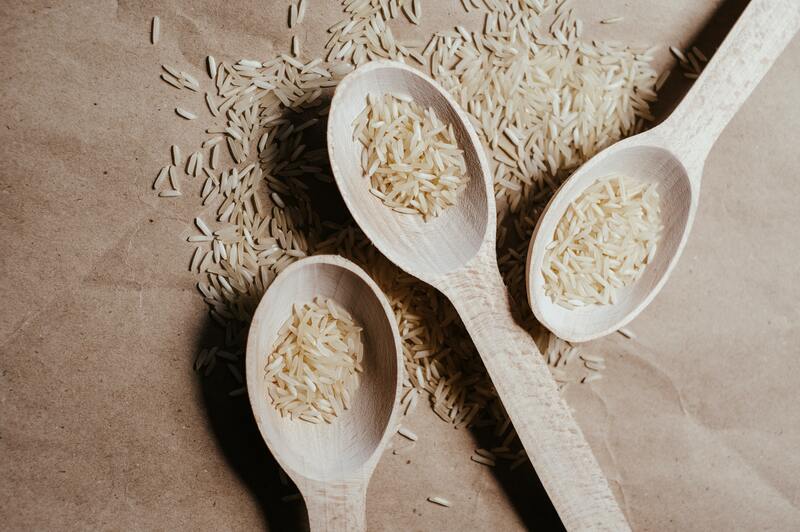Typically, there are a lot of easy-to-find materials around to help you on how to fix water damaged things without rice. Water damage can cause pain in the head, and if you want some ease without depending too much on using rice to repair your water-damaged things, keep reading.

Facts About The Three Types Of Water Damage
Clean water damage
This is a less severe type of water damage because it is clean, toxin-free water. In this category, most water-damaged items of this type can be quick and easy to dry without too many side effects.
Greywater damage
This is the second type of water damage that promotes bacterial growth due to the contaminated water through broken sewers and chemical waste. It is essential to clean and sanitize the affected items thoroughly.
Blackwater damage
This is the third category or type of water damage and the most dangerous because it involves sewage, seawater, river, groundwater, and rising floodwaters. When blackwater damage occurs, you must remove the affected items from your property, and your house must undergo wide disinfection to avoid health risks.
Other materials you can use to clean and dry water-damaged things
Aside from using rice in drying things as many people do, you can try to use these easy to find materials at your home:
- Towel or cloths
- Cotton or cotton buds
- Paper towel or tissue
- Wet/dry vacuum
- Silica gel packets
- Dehumidifier
- Fan
- Alcohol (for sanitation only)
Steps On Fixing Water-Damaged Things Without Rice (Small Electronics And Appliances Only)
Step #1. Identify the type of water damage on the item you need to fix
First, you must identify the category of water damage on your affected electronic device and appliances to prepare materials for proper cleaning and drying of the item. It will be easy for you to deal with the first and second types of water damage.
Step #2. Sanitize the water-damaged electronic device and appliances
If the electronic device is a phone, you must turn it off and start to pull off the small parts such as a sim, micro sd card, and battery. For items like small appliances, make sure the things are unplugged, then sanitize the outer parts.
Step #3. Dry out the water
After sanitation, be ready to dry the water-damaged items carefully. For external drying of electronic devices or appliances, you can use a towel, soft cloth, or paper towels to wipe the water on the outer parts; for internal drying, you can use a cotton bud, wet/dry vacuum, and silica gel packets.
Step #4. Leave the items in a safe and dry place for 48 hours
Be careful, and do not get excited to use the items immediately. Let the moisture inside the devices and appliances be dry entirely, and let them rest for at least 48 hours.
Step #5. Try to plug in the electronic devices and take note of the changes
Lastly, try to plug in your devices or appliances and see the changes. There is a 50 percent chance that your items will work well, and another 50 percent will be for replacement.
(Here’s a tip on how to clean water-damaged electronics)
How to handle water-damaged electronics and appliances safely
Handling water-damaged electronics and appliances present significant risks. You can try to clean and get the items dry on your own or let the professionals do it for you; either way, taking safety measures is essential.
How to prevent water damage (tips and tricks)
Here’s a list of a few tips and tricks you can do take to avoid water damage:
- Look for the main water supply and if you find any issues, do repairs immediately. During midnight, turn off the primary water source to prevent water from overflowing.
- It is good to weatherproof your house to prevent burst pipes if you live in an area prone to intense storms and hurricanes.
- Inspect your household appliances regularly, such as air-conditioning system, washing machine, and refrigerator, to ensure no water leaks. Asking professionals will help too.
- Regularly check your roof, pipes, and plumbing system and make sure they are in good condition.
- See if there is any presence of mold and mildew because they are signs of water damage.
- Make sure to turn off your main water valve if you are going out for a long time to avoid leaks.
- Check and track your water bill to see if there is a sudden rise. It can indicate that there is a leak problem in your house.
- Regularly clean your gutter. You can also try to install gutter guards to prevent gutter clogging.
- You can also buy water or leak detectors you can connect to your phone to notify you of any water leaks in your house. (To know how to detect water-damaged wood, here is a helpful guide.)
Conclusion
With these easy-to-find stuff at home (plus water damage information), it will no longer bother you how to fix water damaged things without rice. Look around, and you will find the answers you are looking for.
